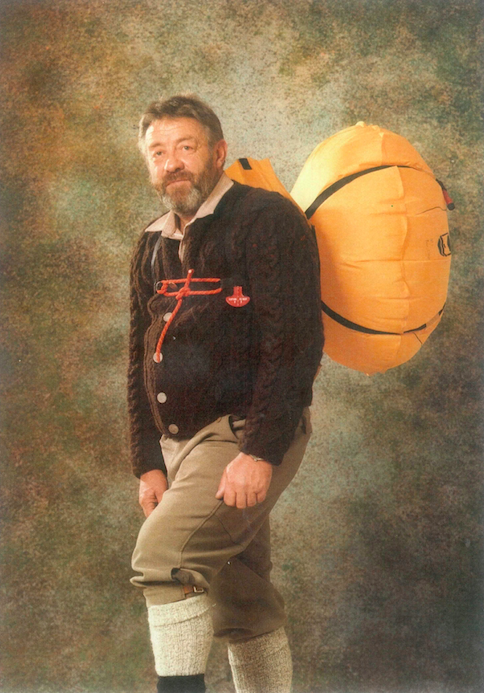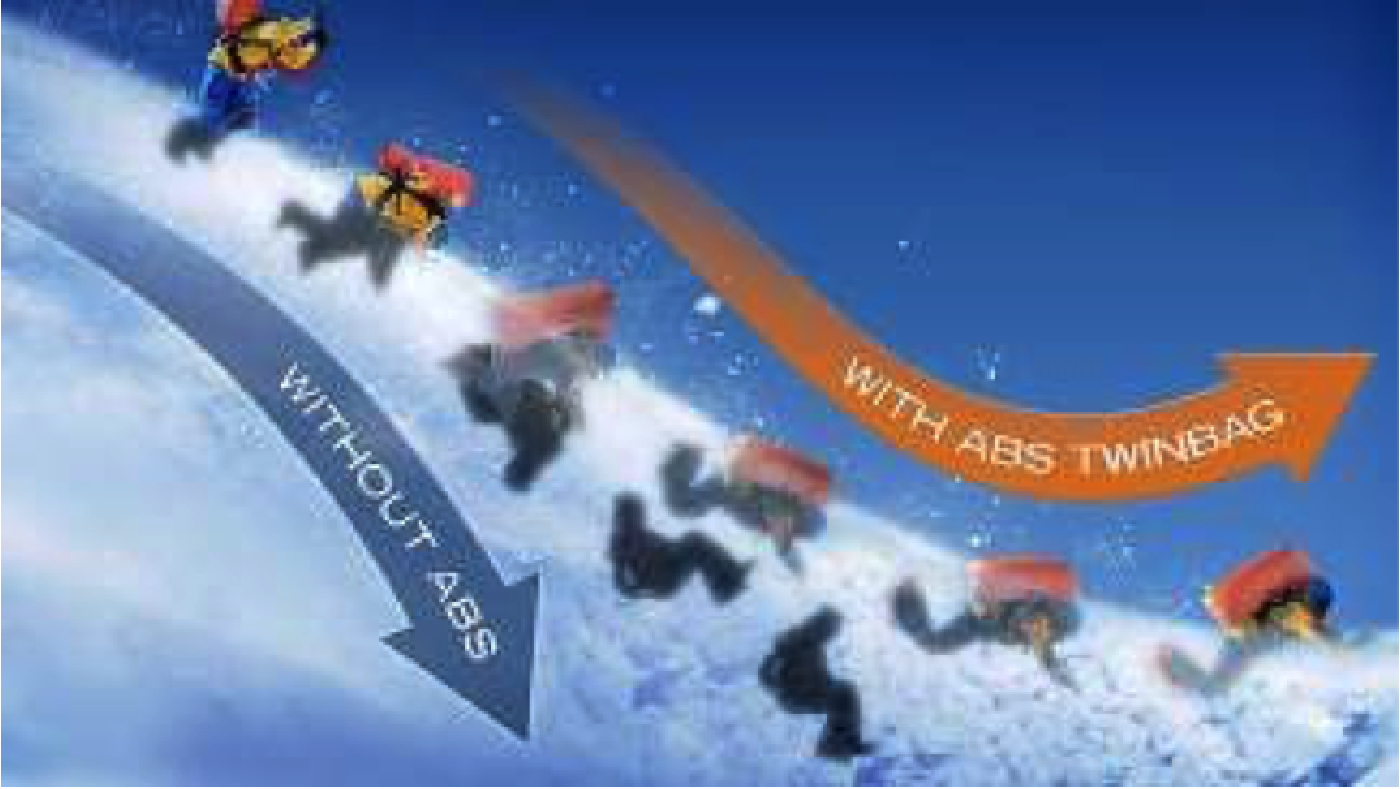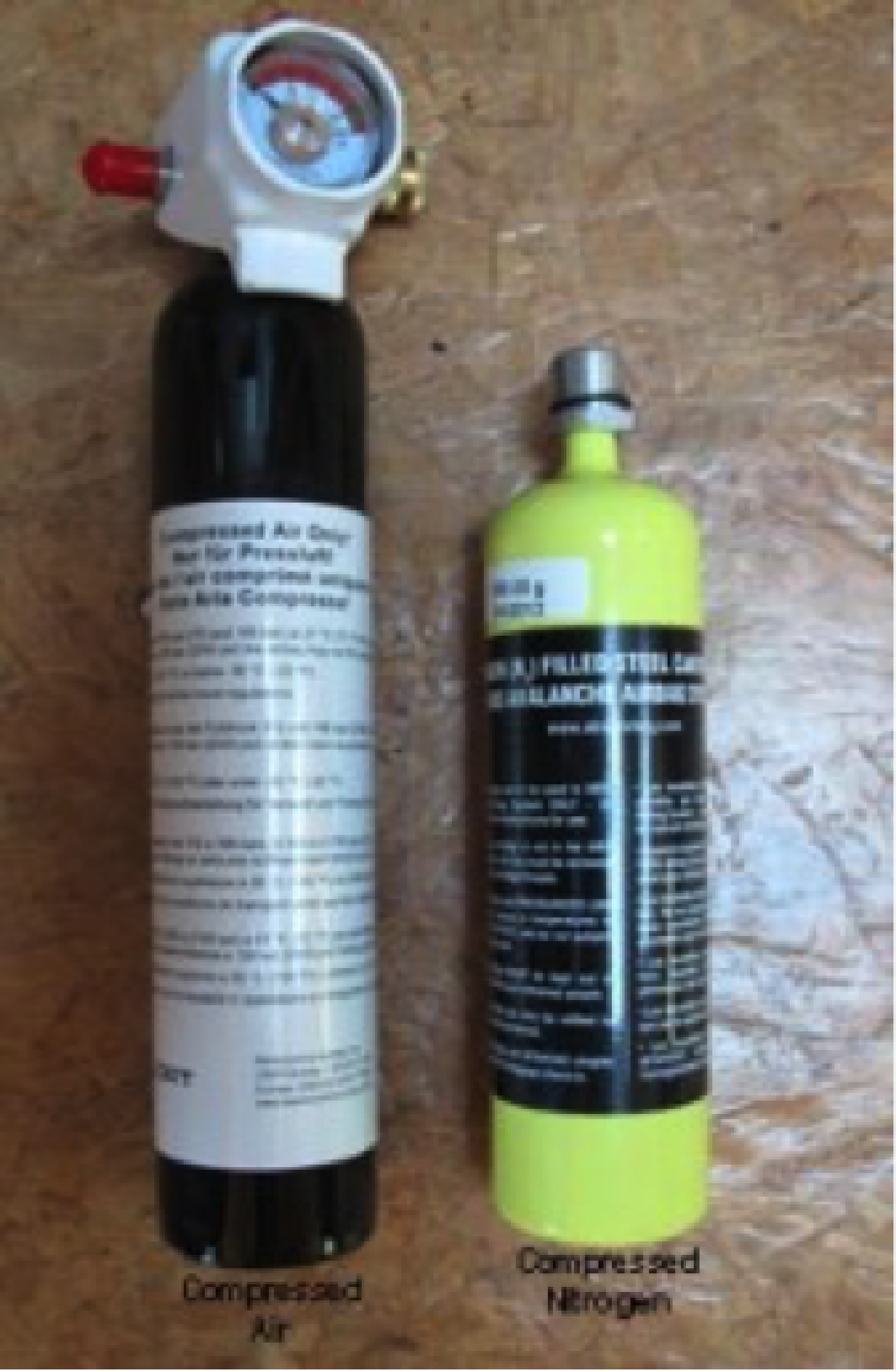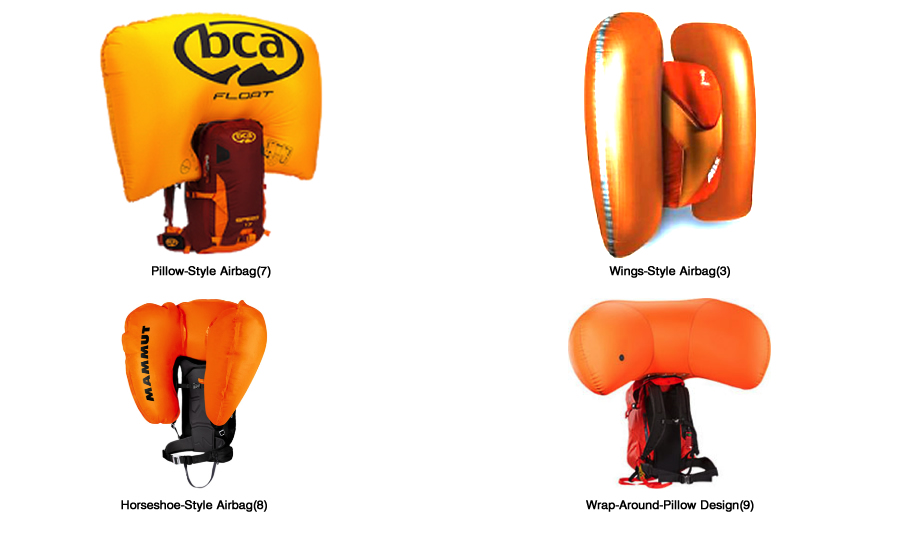Avalanches pose a life-threatening risk to participants of outdoor winter activities. Research over the past thirty years in Europe and the U.S. shows that asphyxia continues to be the main cause of death in avalanche accidents, accounting for 75-90 percent of avalanche fatalities.(1,2) Rescue strategies that prevent and/or minimize duration of burial thus likely remain the most effective methods to prevent fatalities in avalanche terrain.
Enter the avalanche airbag. Airbags have been used in Europe for decades and are finally gaining increasing recognition as a meaningful tool in avalanche fatality prevention in North America as well. The concept of Avalanche airbags was first introduced by Josef Hohenester, a Bavarian forest ranger who surprised himself by surviving an avalanche while traversing a slope with a deer carcass strapped to his back.

Forest Ranger Josef Hohenester modeling his first concept Airbag System(3)
Rather than drag him down, he found that the extra volume provided by the carcass instead provided lift to the top of the slide. What Josef had unwittingly but effectively demonstrated was a principle known to geologists as granular segregation whereby alternating layers of flow in an avalanche act as a random fluctuating sieve, allowing smaller particles to percolate down into gaps that open up beneath them while large particles are left behind. As these smaller particles drop lower, they exert a force that serves to further displace those larger grains upwards.
Like Hohenester’s original concept, all airbags are designed to harness that principle and displace the wearer towards the surface of a slide.

Demonstration of float provided by an avalanche Air Bag System (ABS)(5)
Modern airbags come in a range of shapes, sizes, and deployment systems, but the inflation mechanism is perhaps the most important difference between devices. Most systems rely on compressed air canisters: a refillable single-use canister of compressed gas that discharges into a large balloon, which inflates out of the backpack.

A compressed air (left) and compressed nitrogen canister (right)(6)
Two currently available systems use battery-powered fans instead to rapidly inflate high-tensile airbags over a matter of seconds.(2) These systems offer the advantage of providing multiple uses, from a single charge, the capability of recharging in the backcountry, and allowing the user to practice deployment at minimal cost.
One of these fan-powered systems has the added feature of reversing airflow after three minutes, effectively deflating the bag and theoretically creating an air pocket around the user’s head.
The design of the airbag itself varies as well across devices but no studies yet exist comparing effective float between design shapes.

What’s more, although float remains the main objective with these systems, they may also protect against the second major cause of death in avalanche: trauma (and specifically traumatic brain injury).10 It’s easy to speculate that airbag shapes which provide more cover to the head and neck may offer more protection than others, though studies have yet to validate this theory.
So what data do we have? In 2007, Brugger et. al sought to demonstrate the impact of avalanche airbags on survival. After reviewing 1,500 avalanche victims, they found 19 percent fatality amongst those caught without an airbag device versus 3 percent of those wearing airbags.(11) At first pass, this suggests a 16 percent improved chance of survival amongst avalanche victims who deployed their airbag. However, this study was not without its limitations. Avalanches of all size (including those without the potential for critical burial) and participants with any involvement (including those only cursorily affected) were included. In 2014, Haegeil et. al. looked only at avalanches with “potential for critical burial,” only considered victims seriously involved in the avalanche, and used only accidents that involved multiple victims across different categories. Their study found a 22 percent mortality of avalanche victims without an inflated airbag versus 11 percent mortality rate amongst those who appropriately inflated their airbag.12 These two studies effectively demonstrate at least an 11 percent (and up to 16 percent) decreased likelihood of dying if caught in an avalanche.
Despite the benefits airbags offer, they also carry notable limitations. A user must inflate the airbag and do so early enough in the slide for full effect. Delayed or failed deployments offer little to no protection. And don’t forget: up to 1-in-9 studied avalanche victims who deployed airbags still died. Roughly 80 percent of those victims suffered complete/critical burial despite using their airbags, while 20 percent were killed by trauma alone.(12) These data hammer home the lesson that no piece of equipment can replace responsible decision-making. Avalanches can catch even well prepared experts off-guard, and an avalanche airbag may help a victim survive these potentially catastrophic events.
1. McIntosh SE, Grissom CK, Olivares CR, Kim HS, Tremper B. Cause of death in avalanche fatalities. Wilderness Environ Med. 2007 Winter;18(4):293-7.
2. Stalsberg H, Albretsen C, Gilbert M, et al. Mechanism of death in avalanche victims. Virchows Arch A Pathol Anat Histopathol. 1989;414:415–422.
3. ABS. “30 Years of the ABS Avalanche Airbga: From niche product to recognized emergency equipment.” ABS-Airbag.de • ABS - Avalanche Airbag, 2015, abs-airbag.com/us/history.html.
4. Daniels, Karen E, and Matthias Schröter. “Focus on Granular Segregation.” New Journal of Physics, vol. 15, no. 3, 2013, p. 035017., doi:10.1088/1367-2630/15/3/035017.
5. Dakin, John. “Avalanche Airbag Has Become an Integral Option for Backcountry Safety Equipment.” Vail Daily, Colorado Ski & Snowboard Museum, 22 Feb. 2016, vaildaily.com/news/announcements/avalanche-airbag-has-become-an-integral-option-for-backcountry-safety-equipment/.
6. “Avalanche Airbag Pack Reviews.” Off-Piste Magazine, 21 July 2015, offpistemag.com/avalanche-airbag-packs-whats-new/
7. “BCA Float 17 Speed™ Avalanche Airbag Maroon.” Backcountry Access, backcountryaccess.com/product/float-17-speed-avalanche-airbag-maroon/
8. Ride Protection Airbag 3.0 Avalanche Airbag Backpack 3.0 | Mammut® US, us.mammut.com/p/2610-01300-0001/ride-protection-airbag-30/
9. “News / Arc'teryx.” Arc'teryx Equipment, arcteryx.com/article.aspx?country=us.
10. Johnson SM, Johnson AC, Barton RG. Avalanche trauma and closed head injury: adding insult to injury. Wilderness Environ Med. 2001;12:244–247
11. Brugger, Hermann, et al. “The Impact of Avalanche Rescue Devices on Survival.” Resuscitation, vol. 75, no. 3, 2007, pp. 476–483., doi:10.1016/j.resuscitation.2007.06.002.
12. Haegeli, Pascal, et al. “The Effectiveness of Avalanche Airbags.” Resuscitation, vol. 85, no. 9, 2014, pp. 1197–1203., doi:10.1016/j.resuscitation.2014.05.025.
13. Airbag, ABS. “With the P.RIDE System ABS Introduces the New Generation of Avalanche Airbags.” ABS-Airbag.de • ABS - Avalanche Airbag, abs-airbag.com/en/p.ride.